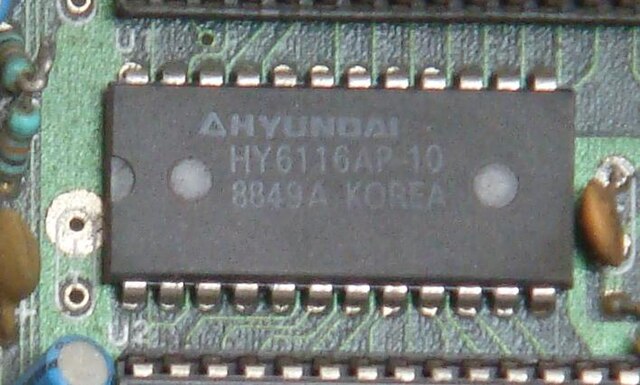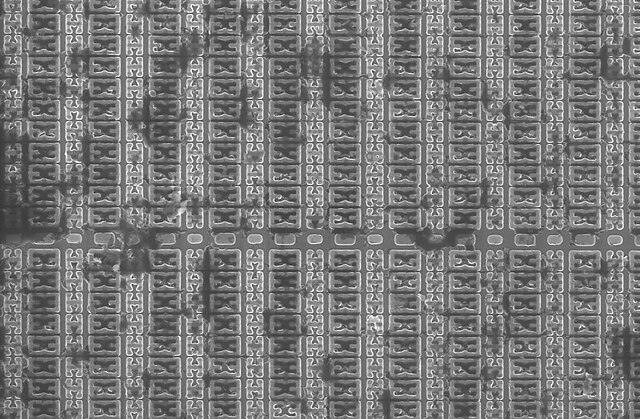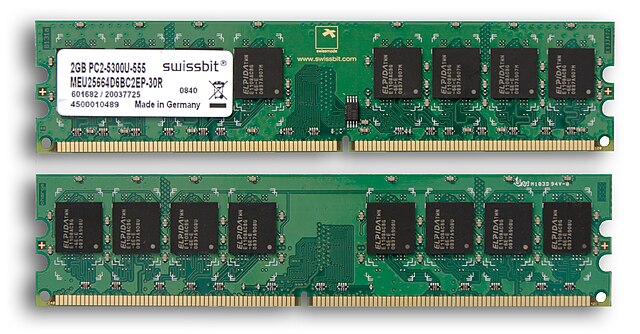Static random-access memory
Static random-access memory is a type of random-access memory (RAM) that uses latching circuitry (flip-flop) to store each bit. SRAM is volatile memory; data is lost when power is removed.
A static RAM chip from a Nintendo Entertainment System clone (2K × 8 bits)
SRAM cells on the die of a STM32F103VGT6 microcontroller as seen by a scanning electron microscope. Manufactured by STMicroelectronics using a 180-nanometre process. Topology of the cells is clearly visible.
Random-access memory is a form of electronic computer memory that can be read and changed in any order, typically used to store working data and machine code. A random-access memory device allows data items to be read or written in almost the same amount of time irrespective of the physical location of data inside the memory, in contrast with other direct-access data storage media, where the time required to read and write data items varies significantly depending on their physical locations on the recording medium, due to mechanical limitations such as media rotation speeds and arm movement.
A 64 bit memory chip die, the SP95 Phase 2 Buffer Memory produced at IBM mid 60s, versus memory core iron rings
Example of writable volatile random-access memory: Synchronous Dynamic RAM modules, primarily used as main memory in personal computers, workstations, and servers.
8GB DDR3 RAM stick with a white heatsink
These IBM tabulating machines from the mid-1930s used mechanical counters to store information.






